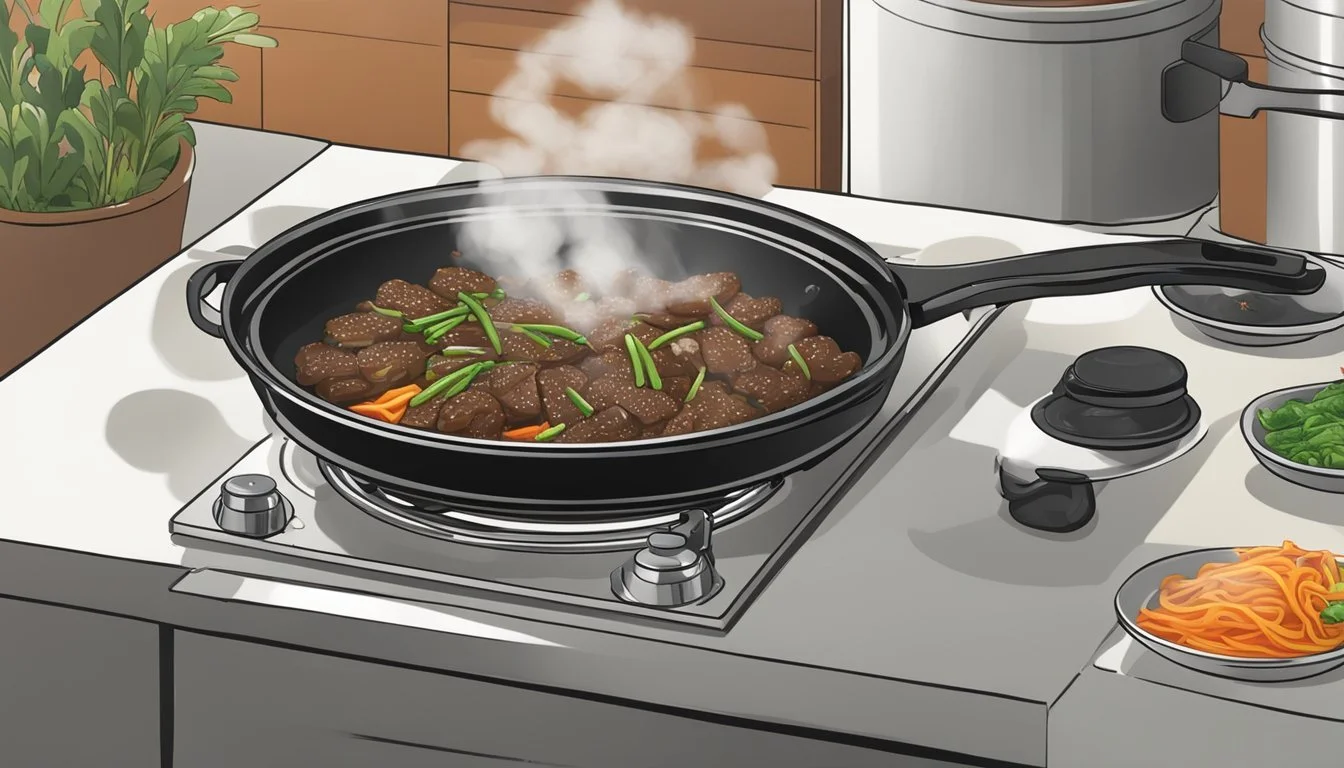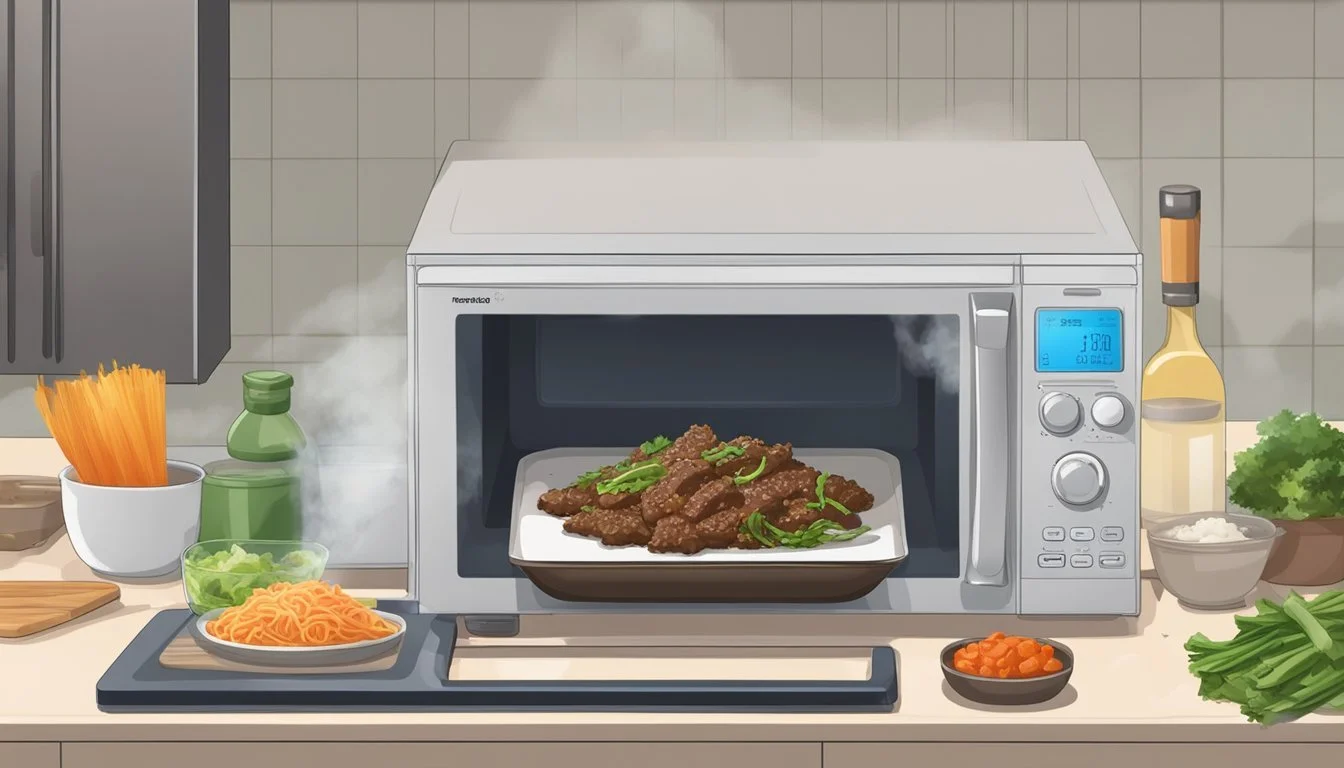How to Reheat Bulgogi
Best Methods for Optimal Flavor
Reheating bulgogi properly is essential to retaining its original flavor and tenderness. Many often find that their leftover bulgogi loses its succulent texture and rich taste when reheated incorrectly. For the best results, choose a method that suits the tools available and ensure the beef is heated evenly without drying out.
Grilling your reheated bulgogi can replicate the original cooking style effectively. By preheating the grill to medium heat and using a grill pan or foil, the beef can be warmed through in approximately 5-7 minutes per side. This method helps maintain the meat’s juiciness while giving it that desirable, slightly charred finish.
Using an oven offers a more controlled environment for reheating bulgogi. Preheat the oven to 350 degrees Fahrenheit, place the beef in a baking dish, and cover it with aluminum foil. Heating for 15-20 minutes ensures the meat is warmed through without losing moisture. Adjust the timing if the quantity of bulgogi varies, and always check to ensure the meat has reached a safe internal temperature.
Understanding Bulgogi
Bulgogi is a beloved Korean dish known for its rich flavors, tender beef, and unique preparation methods. Understanding its origins, ingredients, and preferred beef cuts provides a comprehensive insight into what makes this dish so special.
Origins and Traditional Methods
Beef bulgogi traces its roots back to the Goguryeo era in Korea. Initially, it was a royal dish, slowly making its way into Korean households. The term "bulgogi" translates to "fire meat," highlighting its traditional preparation over an open flame.
Typically, bulgogi is marinated in a mixture of soy sauce, sugar, sesame oil, garlic, and onion, ensuring the meat is infused with deep flavors. It is then grilled or stir-fried, giving it a signature smoky taste. Historically, families would utilize charcoal grills to achieve the authentic char and aroma that is celebrated in traditional bulgogi recipes.
Key Ingredients for Bulgogi
The success of a good beef bulgogi relies heavily on its marinade. The primary components include soy sauce, sugar, sesame oil, garlic, and onion. Each ingredient plays a critical role—soy sauce provides umami, sugar gives sweetness, and sesame oil adds a nutty aroma.
Additional ingredients like asian pear or kiwi are sometimes included to tenderize the beef. Ginger and green onions enhance flavor complexity. Brown sugar may be substituted for regular sugar to give a deeper caramel note. Combined, these ingredients create a perfect balance of sweet, savory, and aromatic elements, essential for marinated bulgogi.
Different Cuts of Beef for Bulgogi
Selecting the right cut of beef is crucial for achieving tender and flavorful bulgogi. Common choices include sirloin and ribeye, which are known for their marbling and tenderness. These cuts absorb the marinade well and maintain their succulence during cooking.
In some recipes, thinly sliced brisket is preferred for its robust flavor. Flank steak and tenderloin are also viable options, offering a balance of tenderness and taste. Whichever cut is chosen, the meat should be sliced thinly against the grain to ensure it remains tender after cooking.
Using these specific cuts and methods ensures the beef bulgogi retains its authentic taste and texture, making it a delightful experience for anyone who savors Korean BBQ.
Preparing Bulgogi for Reheating
Proper preparation is essential to ensure that reheated bulgogi retains its flavor and texture. This includes effective storage techniques and practical pre-reheating tips.
Proper Storage Techniques
To keep bulgogi fresh for reheating, airtight containers play a critical role. After cooking, place the bulgogi in an airtight container and refrigerate it within two hours. This prevents bacterial growth and keeps the beef from drying out.
If storing for a longer period, you can freeze the bulgogi. Spread the beef in a single layer on a baking sheet to freeze quickly. Once frozen, transfer the portions into freezer-safe bags or containers. Label with the date to track freshness. For optimal results, consume frozen bulgogi within three months.
Pre-Reheating Tips
Thaw frozen bulgogi in the refrigerator overnight. This gradual thawing helps maintain the texture and flavor. For quicker thawing, place the sealed container under cold running water. Avoid microwaving or hot water thawing, which can partially cook the meat.
Before reheating, add a splash of broth, water, or marinade to keep the bulgogi moist. If using an oven, preheat to 350 degrees Fahrenheit and cover the dish with foil to trap steam. Avoid overcooking by only heating until warmed through.
Maintaining Quality and Flavor
Proper reheating methods ensure bulgogi retains its high quality and original flavor. This involves preventing overcooking and enhancing the dish post-reheating.
Avoiding Overcooking
Avoiding overcooking is crucial to maintain bulgogi’s texture and flavor. Use a microwave, oven, air fryer, or stovetop, but monitor the meat closely.
When using a microwave, cover the bulgogi with a damp paper towel. Microwave on high for 1-2 minutes, stir, then heat for another 30-60 seconds.
For an oven, preheat to 350°F, place bulgogi in a baking dish, cover with foil, and heat for 15-20 minutes.
Reheating with an air fryer? Set to 350°F, place beef in a single layer, and heat for about 3-4 minutes, shaking the basket halfway.
Grill pan or foil on a grill also works. Preheat to medium heat and grill bulgogi for 5-7 minutes per side.
Enhancing Taste Post-Reheating
Enhancing bulgogi's flavor post-reheating involves simple steps. Add soy sauce, sesame oil, or garlic to revive the taste.
Mix a small amount of sugar with sesame oil to balance sweet and savory flavors. A dash of black pepper can add a bit of heat.
Serve with fresh lettuce leaves to introduce a refreshing crunch and contrast.
Maintain the dish’s moisture by adding a splash of water or broth if it feels dry.
Following these steps ensures the reheated bulgogi remains a delicious and satisfying treat.
Innovative Ways to Enjoy Leftover Bulgogi
Leftover bulgogi can be transformed into exciting new dishes. With a bit of creativity, you can make delicious meals such as bulgogi tacos, fried rice, and even soups.
Bulgogi Tacos and Wraps
Bulgogi tacos are a delightful way to enjoy your leftovers. Start by warming flour or corn tortillas. Add a generous portion of reheated bulgogi. Top with shredded lettuce, diced tomatoes, and sliced avocados. For an extra kick, drizzle with sriracha or a spicy mayo sauce. Lettuce wraps are another healthy option; simply replace the tortillas with large lettuce leaves. Fill with bulgogi, add some kimchi or pickled radishes, and enjoy a light, yet flavorful meal.
Bulgogi Fried Rice and Noodles
Transform leftover bulgogi into delectable fried rice or noodles. Heat a non-stick skillet and add a bit of oil. Sauté chopped garlic and vegetables like bell peppers, carrots, and peas. Add cooked rice or noodles to the skillet, followed by your reheated bulgogi. Season with soy sauce and a dash of sesame oil. Stir until everything is well combined and heated through. This method blends the savory flavors of bulgogi with the richness of fried rice or noodles, creating a satisfying dish.
Bulgogi Salads and Soups
Turning bulgogi into a salad is a fresh and nutritious option. Toss your reheated bulgogi with mixed greens, sliced cucumbers, cherry tomatoes, and thinly sliced red onions. Dress the salad with a tangy sesame dressing for added flavor. For a warm and comforting meal, consider a bulgogi soup. In a pot, bring beef broth to a boil and add vegetables like spinach, mushrooms, and green onions. Add your reheated bulgogi to the broth. Let it simmer for a few minutes to meld the flavors. This creates a hearty soup perfect for any day.
Pairing and Serving Suggestions
When enjoying Bulgogi, pairing it with the right sides and drinks can enhance the overall dining experience. Below are some suggested pairings that complement the rich flavors of this Korean dish.
Complementary Side Dishes
Rice
A classic accompaniment to Bulgogi is steamed rice. The plain flavor of the rice balances the savory sweetness of the marinated beef, allowing the flavors to shine.
Lettuce Wraps
Lettuce leaves are perfect for creating wraps. Place a piece of Bulgogi in the leaf along with a bit of kimchi and rice. This combination provides a refreshing contrast to the rich and spicy flavors.
Vegetable Banchan
Traditional Korean side dishes or "banchan" include lightly seasoned vegetables like spinach, radish, and cucumbers. These sides add variety and texture to the meal.
Garnishes and Condiments
Consider garnishing with toasted sesame seeds and sliced green onions. These garnishes add a slight crunch and a burst of flavor. A sprinkle of sesame seeds not only enhances the appearance but also adds a nutty taste.
Drinks that Pair with Bulgogi
Tea
Green tea or barley tea are excellent non-alcoholic choices. They have a clean and refreshing taste that complements the rich flavors of Bulgogi without overpowering them.
Korean Rice Wine (Makgeolli)
For those who enjoy alcoholic beverages, Makgeolli, a traditional Korean rice wine, pairs wonderfully. Its slightly sweet and tangy flavor can balance the savory-sweet profile of Bulgogi.
Light Beers
Light, crisp beers such as pilsners or lagers help cleanse the palate and refresh the senses, making them a good match for this dish's bold flavors.
Tips
It’s essential to keep drink choices simple and not too overpowering. The goal is to complement the dish rather than compete with it. Whether opting for tea or light alcohol, balance is key.





